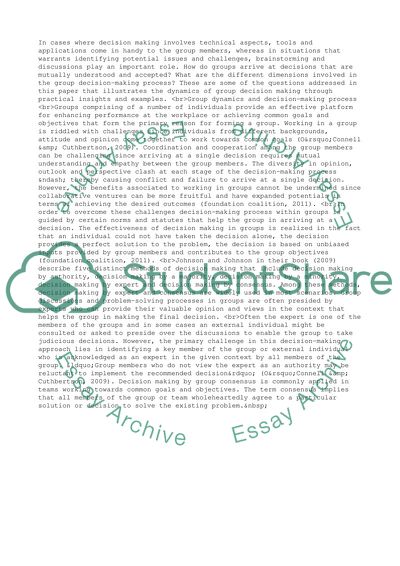Cite this document
(Group Dynamics and Decision Making Process Essay - 1, n.d.)
Group Dynamics and Decision Making Process Essay - 1. Retrieved from https://studentshare.org/management/1428174-group-decision-making
Group Dynamics and Decision Making Process Essay - 1. Retrieved from https://studentshare.org/management/1428174-group-decision-making
(Group Dynamics and Decision Making Process Essay - 1)
Group Dynamics and Decision Making Process Essay - 1. https://studentshare.org/management/1428174-group-decision-making.
Group Dynamics and Decision Making Process Essay - 1. https://studentshare.org/management/1428174-group-decision-making.
“Group Dynamics and Decision Making Process Essay - 1”, n.d. https://studentshare.org/management/1428174-group-decision-making.


